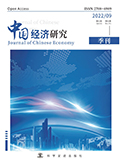

住房以及相关基本公共服务的保障问题是关系到人民安居乐业的基本问题。如果居民的租房权力与住房权力存在不对等的情况, 将势必影响租房群体的相关利益。本文分析“租购同权”政策实施对于我国房屋房地产销售市场和租赁市场的影响。以广州市2017年7月17日实施的“租购同权”政策为分界点, 利用了双重差分法 (DID) 对广州二手房市场以及租房市场进行了分析。结论表明, “租购同权”政策的实施, 对于广州二手房市场的房价并没显著影响, 但是可以使得学区房房价的增长率下降, 起到一定的抑制作用; 同时该政策对房屋租赁市场影响不显著。本文认为, 未来应当贯彻落实细化“租购同权”政策, 力图给予购房者和租房者相同享受公共产品服务的权利, 是促进社会公平和谐发展的手段。以“学区房”为例, 可以减缓学区房相关地区房价的持续增长, 有利于房地产市场的健康发展。
The protection of housing and related basic public services is a fundamental issue that concerns people’s security of tenure. If there is a mismatch between the right to rent and the right to housing, it will inevitably affect the relevant interests of the rental group. This paper analyzes the impact of the implementation of the “equal rights to rent and purchase” policy on the real estate sales market and rental market in China. Taking the policy of “equal rights to rent and purchase” implemented in Guangzhou on July 17, 2017 as the cut-off point, this paper analyzes the second-hand housing market and the rental market in Guangzhou by using the method of differences-in-differences (DID) . The conclusion shows that the implementation of “equal rights to rent and purchase“ policy has no significant impact on the housing price of secondhand housing market in Guangzhou, but it can a dampening effect by reducing the growth rate of housing price of school district, and play a certain inhibitory role. At the same time, the policy has no significant impact on the housing rental market. This paper argues that the policy of “equal rights for rent and purchase” should be implemented refined in the future, in an attempt to give the same rights to public goods and services to the home buyers and renters, as a means of promoting the fair and harmonious development of society. Taking “school district housing” as an example, it can slow down the continuous growth of housing prices in areas related to school district housing, which is conducive to the healthy development of the real estate market.